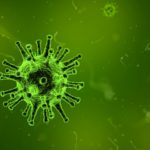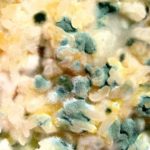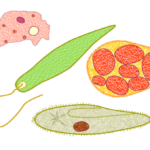It’s World Meningitis Day! #Meningitis affects more than 2.8 million people globally each year. Meningitis can be a scary disease. It can be contagious, debilitating, and even deadly. That’s why it is important to understand what it is, how to recognize it and how to prevent it.
 What is meningitis?
What is meningitis?
The meninges are a set of tissue membranes that line the skull and vertebral column, encasing the brain and spinal cord. The primary function of the meninges is to protect the central nervous system. If these membranes becomes inflamed for any reason, this condition is called meningitis.
When should we suspect meningitis and how do we diagnose it?
Symptoms of meningitis can progress quickly over hours, or slowly over several days. Individuals with meningitis may complain of fever, headache, nausea, and neck pain or stiffness. Bright lights or loud sounds may make them feel worse. Without treatment, these symptoms may progress to confusion, stupor, coma or even death.
When these symptoms are identified, medical professionals will obtain a lumbar puncture. This procedure helps to diagnose meningitis by obtaining a sample of fluid from around the spinal cord. Specific tests should be ordered to look for evidence in the fluid of bacterial, fungal, viral, or even parasitic causes if history suggests.
What causes meningitis?
- Viral infections by far are the most common cause of meningitis. Enteroviruses are the most common virus identified but the list of viruses causing meningitis is long.
- Some viral meningitis syndromes can be caused by viruses spread by mosquitoes in warmer weather (such as West Nile Virus)
- Viral meningitis is typically less severe and most people get better on their own in 7-10 days
- Some people receive antivirals like acyclovir while awaiting results of spinal fluid testing to rule out herpes simplex virus (HSV) infection
- Vaccines exist for VZV, mumps, measles and rubella (MMR). These vaccines help prevent systemic disease from these viruses, and subsequently reduce the risk for developing meningitis.
- The most common bacteria responsible for meningitis are: Streptococcus pneumoniae, Neisseria meningitidis, Haemophilus influenzae type b (HiB), group B Streptococcus, and Listeria monocytogenes.
- Some of these organisms, like Streptococcus pneumoniae and Neisseria meningitidis, can be found in the back of the nose and throat of perfectly healthy people. When they get into the wrong place, (i.e. the central nervous system) they start to become a problem.
- It’s important to note that Meningococcal Meningitis caused by Neisseria meningitidis is not transmitted through casual contact and generally thought of as less contagious than the common cold or flu. However, those with close physical contact or anyone with exposure to an infected person’s saliva via a cough, sneeze or a kiss should be receive antibiotic prophylaxis and contact precautions should be taken
- There have been outbreaks of bacterial meningitis due to serogroup B meningococcal disease, and meningitis vaccination is recommended for college students
- If bacterial meningitis is suspected based on spinal fluid testing and presenting symptoms, healthcare professionals will prescribe antibiotics targeting the most likely organisms (empirically) until this information is confirmed.
- Vaccines exist for Streptococcus pneumoniae, Neisseria meningitidis (may have some protection against gonorrhea as well!!) and Haemophilus influenzae B (HiB)
- Fungal meningitis is rare and usually associated with those with a weakened immune system, like persons living with HIV, cancer patients or transplant recipients.
- Fungal meningitis cannot be spread between individuals like bacterial meningitis; usually they occur if a person has been exposed to the fungus in the environment and subsequently develops a weakened immune system
- The types of fungi called endemic fungi can be found in the soil of specific geographic regions. Cryptococcus can be associated with bird droppings. Histoplasma can be associated with bird/bat droppings and is most commonly seen in the Midwest near the Ohio and Mississippi rivers. Blastomyces is also common in soil from the Midwest, and Coccidioides is typically seen in the Southwestern US and South America.
- A recent multistate outbreak of fungal meningitis was associated with use of contaminated steroid epidural or paraspinal joint injections; many fungi were isolated in the outbreak, but the most commonly identified organism was Exserohilum rostratum.
- Meningitis due to parasites is even more rare than fungal meningitis.
- Some parasites can cause a type of meningitis called eosinophilic meningitis. These are Angiostrongylus cantonensis, Baylisascaris procyonis, and Gnathostoma spinigerum . People can be infected with these parasites by ingesting under-cooked food contaminated with their eggs.
- Another type of parasitic meningitis is caused by an amoeba called Naegleria fowleri. This causes Primary amebic meningoencephalitis, which is a typically fatal brain infection. People are infected with this organism through contaminated freshwater when it enters the nose forcefully such as when swimming or diving in lakes or rivers, therefore consider plugging your nose as you enter the water if you dive or swim in freshwater.
Non-infectious Meningitis
- These causes of meningitis include cancer, autoimmune disorders like lupus and drugs including non-steroidal anti-inflammatory medications and antibiotics.
- Non-infectious Meningitis cannot be spread from person to person.
Treatment and Prevention of Meningitis
- Think about meningitis if you or your loved one develops any of the symptoms described above.
- Antibiotics are needed for bacterial meningitis, but do not help with other types of meningitis
- The most effective way to prevent meningitis is through vaccination when available.
- If you come into close contact with someone with a known case of bacterial meningitis, your doctor may prescribe you an antibiotic to help prevent you from developing bacterial meningitis too.
- People who are at most risk for developing meningitis or complications include babies and elderly people, those with weak immune systems and people who do not have a functional spleen. These people should definitely be vaccinated if possible.
Take Away: Meningitis can be scary, so don’t be afraid to ask your local Infectious Diseases specialist for help! Many of the worst cases can have good recovery if treated early and effectively.
Content courtesy Drs. Randy McCreery MD (IM PGY3, incoming UNMC ID Fellow), and Jasmine R Marcelin MD (UNMC ID Physician)




